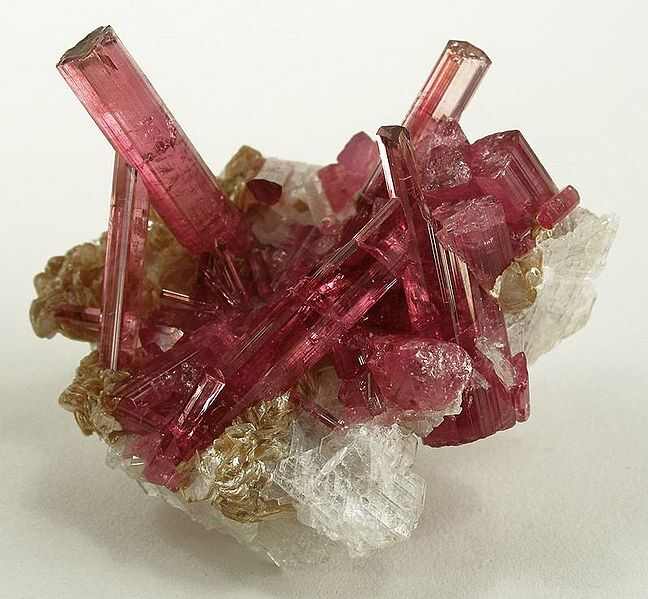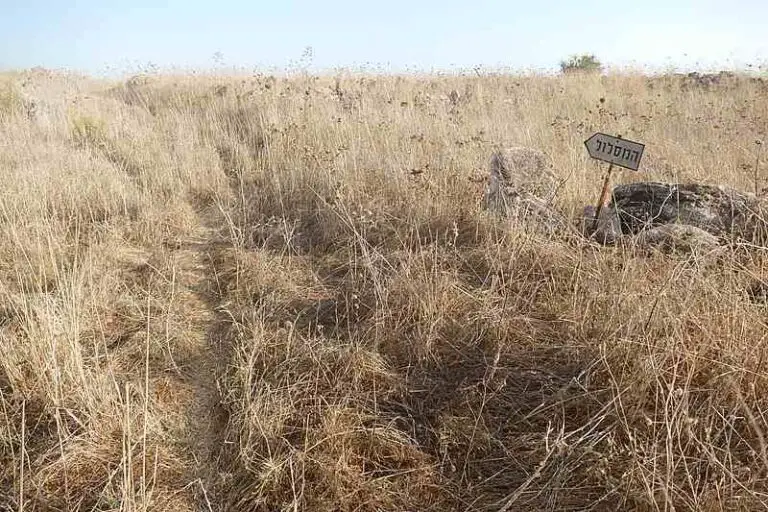5 Pyroelectric Crystals Examples Explained
Pyroelectric crystals examples are; quartz, tourmaline, triglycine sulfate, londonite, and lithium sulfate monohydrate.
Basically, pyroelectric crystals are a type of pyroelectric material that differs from other pyroelectrics like ceramics (such as barium titanate) and collagen.
This article discusses examples of piezoelectric crystals, as follows;
1). Quartz (as one of the Pyroelectric Crystals Examples)
Quartz is a pyroelectric crystal, which is naturally-occurring and non-centrosymmetric; meaning that there is no center of symmetry in its crystal structure.
Some studies claim that quartz is the first material in which pyroelectric behavior was ever observed.
While this is not always corroborated, the observation of pyroelectricity in quartz dates back to 1824, the same time-period in which many pyroelectric minerals were identified and studies.
Being a naturally-occurring material, the pyroelectric behavior of quartz is unique, and may not be as effective as that of some engineered materials.
Quartz is both pyroelectric and piezoelectric, meaning that mechanical stress can also induce an electric potential in quartz crystals.
It has also been observed that the pyroelectric behavior of quartz can be enhanced, or at least altered, by the application of stress [2].
Minerals that show pyroelectric properties are; Quartz, Londonite, and Tourmaline.
2). Tourmaline
All types of tourmaline crystals are pyroelectric, including black tourmaline, which is used mostly for aesthetic purposes.
The pyroelectric property of tourmaline is caused by its peculiar crystalline structure, which is characterized by a polar non-symmetric configuration [7].
Like quartz, tourmaline is one of the earliest minerals whose pyroelectricity was observed and evaluated.
Electricity that is induced in tourmaline by the pyroelectric effect is of low magnitude, ranging between 10-15 Amperes. This implies that tourmaline is weakly pyroelectric especially in comparison to other materials.
There are multiple applications of tourmaline, including optical, thermal energy-based, aesthetic and environmental uses [8].

3). Triglycine Sulfate (as one of the Pyroelectric Crystals Examples)
Triglycine sulfate (TGS) is a pyroelectric crystal with strong ferroelectric properties as well, which is multi-dimensional in its forms and applications.
One of the innovative forms in which triglycine sulfate is used is the thin-film form, which comprises of nano-crystals in a fabricated, flexible lattice [4].
The pyroelectric characteristics of triglycine sulfate are relatively good, so that it is one of the most commonly-used materials in pyroelectric detectors.
Enhancement of pyroelectricity in this crystal can be achieved by doping it with conductive materials like arsenic [1].
4). Londonite
Londonite is a pyroelectric crystal with a distinctive, complex chemical composition defined by the formula; ((Cs,K)Al4Be4(B,Be)12O28 [3].
The mineral is part of a species of slightly-radioactive, piezoelectric and pyroelectric materials whose tendency to emit nuclear radiation is due to the presence of Cesium (Cs) in their chemical composition.
Like triglycine sulfate, londonite has relatively-strong pyroelectric properties.

5). Lithium Sulfate Monohydrate (as one of the Pyroelectric Crystals Examples)
Lithium sulfate monohydrate (LSMH) is a pyroelectric crystalline compound whose electric potential can be generated under a very broad range of temperatures.
The crystalline structure of lithium sulfate monohydrate is monoclinic, and distinctive in terms of axial dimensions [5].
Its pyroelectric qualities can be enhanced through doping, and its uses include cryogenic refrigeration and pyroelectric sensing [6].
Conclusion
Pyroelectric crystals examples are;
1. Quartz
2. Tourmaline
3. Triglycine Sulfate
4. Londonite
5. Lithium Sulfate Monohydrate
References
1). Bhalla, A. S.; Fang, C. S.; Xi, Y.; Cross, L. E. (1983). "Pyroelectric properties of the alanine and arsenic‐doped triglycine sulfate single crystals." Appl. Phys. Lett. 43, 932 (1983). Available at: https://doi.org/10.1063/1.94185. (Accessed 28 February 2023).
2). Fukuhara, M., Sampei, A. (2001). "Stress-induced pyroelectric properties of devitrified fused quartz in elevated temperature." Journal of Materials Science: Materials in Electronics 12, 131–135 (2001). Available at: https://doi.org/10.1023/A:1011214523661. (Accessed 28 February 2023).
3). Gatta, G. D.; Vignola, P.; McIntyre, G.; Diella, V. (2010). "On the crystal chemistry of londonite [(Cs,K,Rb)Al4Be5B11O28]: A single-crystal neutron diffraction study at 300 and 20 K." American Mineralogist 95(10):1467-1472. Available at: https://doi.org/10.2138/am.2010.3554. (Accessed 28 February 2023).
4). Ghane-Motlagh, R.; Woias, P. (2019). "A Pyroelectric thin film of oriented Triglycine sulfate nano-crystals for thermal energy harvesting." Smart Materials and Structures 28(10). Available at: https://doi.org/10.1088/1361-665X/ab3910. (Accessed 28 February 2023).
5). Karppinen, M.; Liminga, R.; Lundgren, J-O. (1986). "Charge density in pyroelectric lithium sulfate monohydrate at 80 and 298 K." J. Chem. Phys. 85, 5221 (1986). Available at: https://doi.org/10.1063/1.451661. (Accessed 28 February 2023).
6). Lang, S. B. (1976). "Cryogenic refrigeration utilizing the electrocaloric effect in pyroelectric lithium sulfate monohydrate." Ferroelectrics, Volume 11, 1976 - Issue 1. Available at: https://www.tandfonline.com/doi/abs/10.1080/00150197608237787. (Accessed 28 February 2023).
7). Lu, Q.; Li, B.; Bai, F. (2016). "Electrical Effect and Influence Factors of Tourmaline." In: , et al. Characterization of Minerals, Metals, and Materials 2016. Springer, Cham. Available at: https://doi.org/10.1007/978-3-319-48210-1_10. (Accessed 28 February 2023).
8). Zhou, G.; Liu, H.; Kairen, C.; Gai, X.; Zhao, C.; Liao, L.; Shen, K.; Fan, Z.; Shan, Y. (2018). "The origin of pyroelectricity in tourmaline at varying temperature." Journal of Alloys and Compounds 744. Available at: https://doi.org/10.1016/j.jallcom.2018.02.064. (Accessed 28 February 2023).




